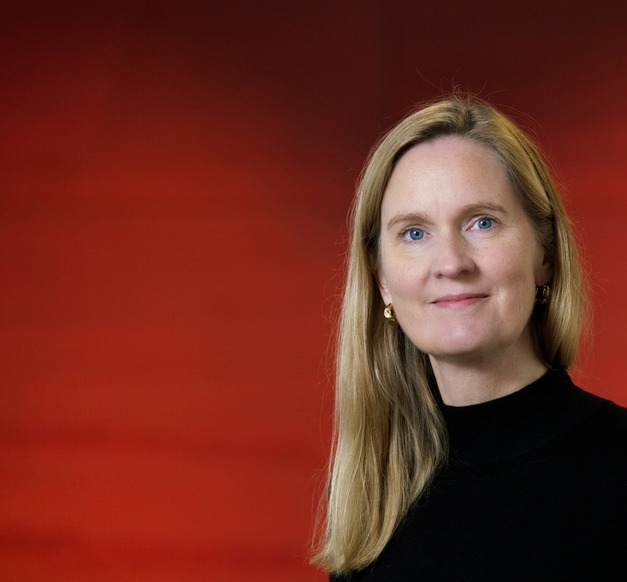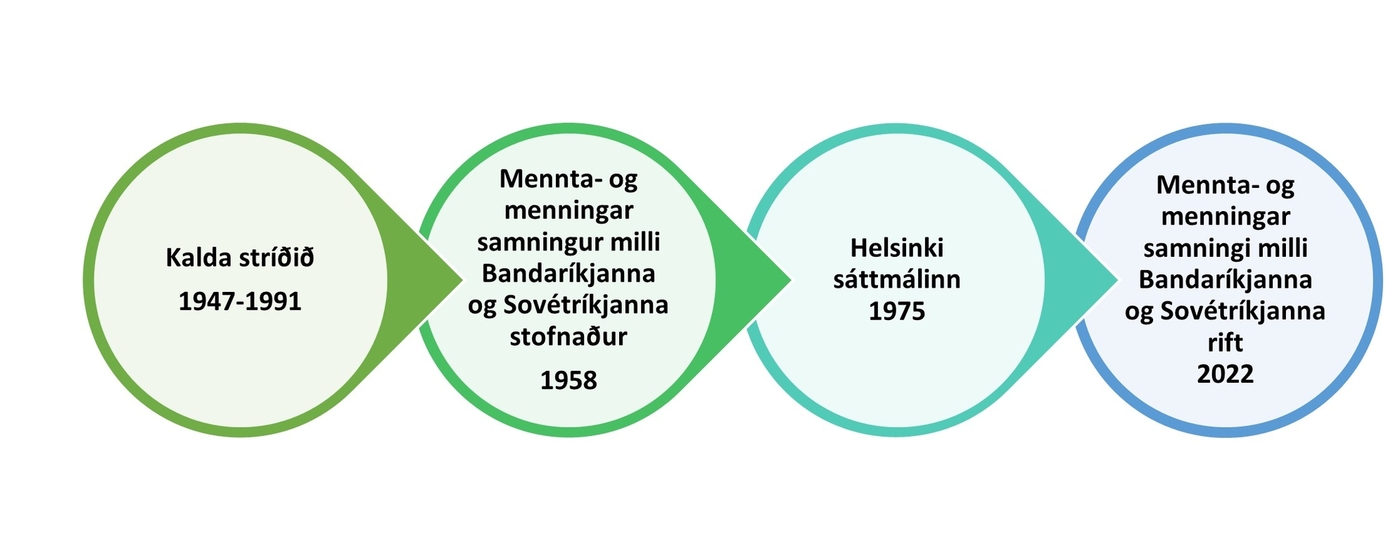
"My interest was first piqued when I saw stories about couples who were divided, that is people who were married but were unable to live together. I saw an opportunity to explore the Cold War and the conflict between superpowers from the perspective of the impact it had on personal lives," says Rósa Magnúsdóttir, professor of history at the University of Iceland.
Many people probably think of the Cold War, which took place between 1947-1991, mainly as an arms race between two superpowers: the USA and the USSR. But the Cold War also touched people's private lives, including their marriages. Love knows no borders, but the Soviet Union made it difficult for its citizens to consider marrying a foreigner.
Explored the history of Russia and Eastern Europe in her PhD
Rósa completed a BA in history with a minor in political science from the University of Iceland in 1999 and immediately went on to do a PhD in the US. At the University of North Carolina at Chapel Hill, Rósa learned Russian history at the Department of History, which specialised in the topics of Russia and Eastern Europe. "I wrote a PhD thesis about the Cold War from the Soviet perspective – Soviet propaganda and ideology during the Cold War." Rósa was based in the US but spent considerable time in Russia and learned to speak Russian. She also spent a lot of time in Germany, before moving to Denmark after her PhD and living there for 15 years. Rósa has worked at the University of Iceland since 2021 and has recently moved back to Iceland with her whole family.
A book by Steinbeck inspired the research
Rósa is now working on research which has its roots back in the days of her PhD. She was completing her thesis about Soviet propaganda against the US after the Second World War. "I found a reference in a very famous book, A Russian Journal by the American author John Steinbeck, which is about his travels in the Soviet Union in 1947." Steinbeck provides a powerful portrayal of the postwar period, when the Soviet Union lay in ruins.
The book describes Steinbeck's visit to a diplomat's club in Moscow, where he met distraught Soviet women who were unable to leave the USSR, despite being married to American and British men. "That immediately caught my interest. Who are these women, sitting there in some diplomat's club, married to foreigners but forbidden from leaving the Soviet Union?" says Rósa. Steinbeck's account became the inspiration behind her current research.
After Stalin's death, the law forbidding marriage to foreigners was repealed. Practically, however, nothing changed until the USSR and the USA signed the Agreement on Cultural, Technical and Educational Exchanges in 1958. "Exchanges led to hundreds of marriages between Soviets and Americans during the Cold War, in a time when it was difficult to travel between the two countries," says Rósa.

Trapped in the East
In the years following the Second World War, Stalin banned marriage to foreigners and made things difficult for those who were already married to foreigners. "These Soviet spouses were forbidden from leaving the country. So if you were married to a foreigner, you were actually trapped in the Soviet Union. You were not permitted to go and be with your husband or wife," explains Rósa.
After Stalin's death, the law forbidding marriage to foreigners was repealed. Practically, however, nothing changed until the USSR and the USA signed the Agreement on Cultural, Technical and Educational Exchanges in 1958. "Exchanges led to hundreds of marriages between Soviets and Americans during the Cold War, in a time when it was difficult to travel between the two countries," says Rósa.
Although the marriages were usually legal, Soviets were often still restricted. They might be denied a visa to leave the country, or their spouses were refused entry. This made things very difficult for people and little changed until the Helsinki Accords were signed in 1975. The Helsinki Accords were an attempt to reduce tensions between East and West and a large section of the document was focused on human rights and family reunification, where the aim was to allow families to live together in the same country. It led to a major international crisis, with international organisations, national leaders and pressure groups such as the Divided Spouses Coalition working to raise awareness of how the Soviet Union was violating people's rights. "It's fascinating, because here we can see how tensions between superpowers directly affect personal lives."
The Cold War was more than an arms race
This is important research that will highlight the fact that the Cold War was more than an arms race. "That political saga does define the framework, but we also want to find out how the politics of superpowers, the arms race and the space race, affected normal people," says Rósa.
Rósa explains that her research is relevant to current debates about immigration, international relations and the use of diplomatic 'weapons'. "For the first time since 1985, the Soviet-American Agreement on Cultural, Technical and Educational Exchanges has now been revoked for a year." These routes that allowed young people to get to know one another are therefore no longer open to the same extent. Rósa argues that Russia revoked the agreement because Putin wanted to show that they could also influence international relations.

Rósa's research is relevant to the international academic community and its value lies in its potential to "open our eyes to the way international affairs and politics affect individuals and their private lives," which has been the connecting theme in all her research ever since she was an undergraduate.
The research is still in the early stages, since the Russian invasion of Ukraine has caused delays. However, Rósa has obtained access to archived documents from the Divided Spouses Coalition, an American activist group that fights for the rights of married couples. Rósa will use qualitative research methods, relying on documents, archives, memoirs and interviews.
She has already published one article about the project in which she describes the history behind international marriages in the Soviet Union and looks at the Divided Spouses Coalition. Rósa also plans to write a book on the topic in English, focusing on the period after 1975 which saw significant changes in the international environment. Her goal is to explore the fates of Soviets and Americans who experienced difficulties due to their international marriages and to look at how they reflect the politics of the superpowers at this time. "I find it quite exciting to turn the spotlight onto these kinds of emotions, because as many people know so much of the Cold War was about emotions like fear and dread – but not so many people are familiar with stories of love between Soviets and Americans."
Author of the article: Dagný Lind Erlendsdóttir, MA student in Journalism


